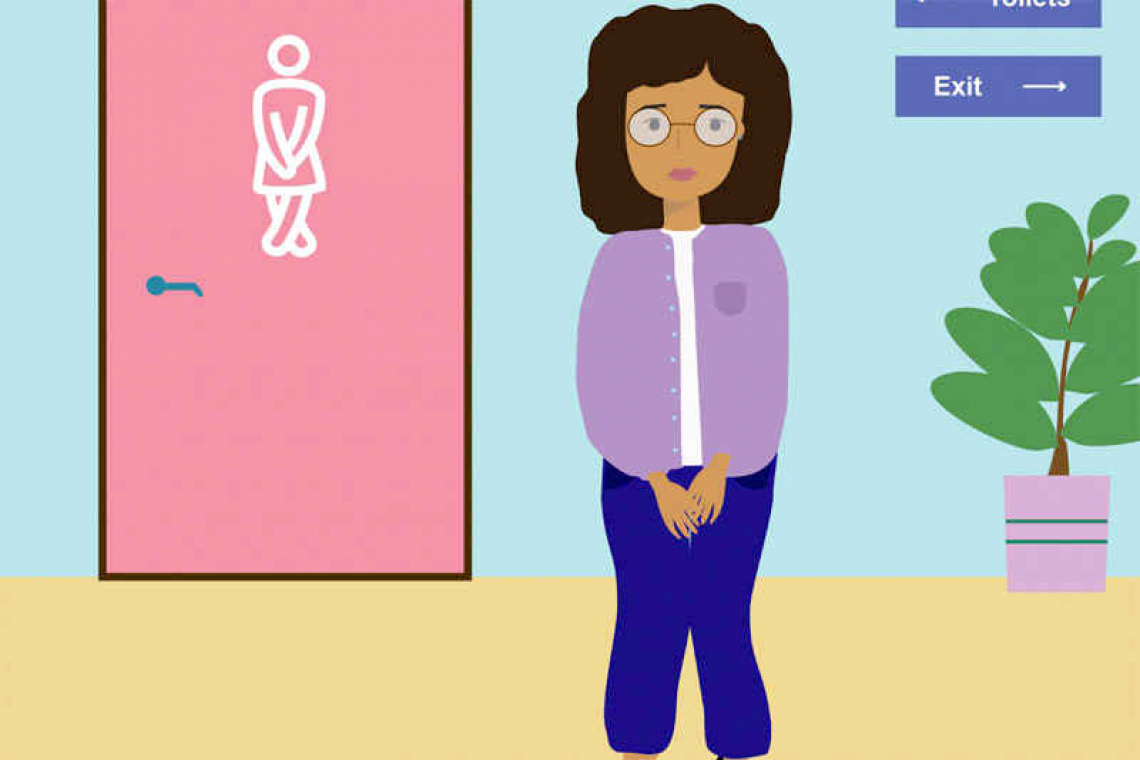Author: Dr Colin Michie
Aunt Annie fascinated me as a child. Active, gossipy, brandishing a stick, she would always bring her own purple cushion when she visited us on Sundays. She sat on it in church, in the car, on the sofa and dining chairs. It was only as a teenager I realised that she was embarrassed by leaks of urine that sometimes accompanied hymn signing, coughing or laughter. No one ever discussed that cushion...
Unexpected urine leaks afflict many. They cause embarrassing personal and social crises, changing the quality of life. Sufferers and carers rarely seek help; information can be difficult to find. Like my Aunt Annie, they may employ cushions or absorbent pads and underclothes. To their shame, health providers have often ignored incontinence.
The needs are great. Surveys suggest 25-45% of women and 25% of men over 40 have episodes of urinary incontinence. Some 41.8% of cross-fit competitors in one study reported incontinence – 17.7% during their exercises. Incontinence is more common with a positive family history, increasing age and body weight, becoming bed-bound or following a stroke. Giving birth to children or prostate surgery can be relevant too. For all types of incontinence, you can start effective initial treatments yourself.
Our abdomen develops as a tube of layered muscles, tendons and connective tissues. These run from the rib cage and spine to the pelvis. Below the chest, this tube is covered by the thin diaphragm supporting the lungs. At the pelvis, a basin of thicker muscles makes up the pelvic floor. Since the 1990s, this cylinder has been referred to as your core. Core muscles coordinate, stabilise and support your posture and movements, with your centre of gravity in the pelvis. Over time, cultural obsessions have tended to focus on the appearance of the six-pack at the front of our tube; the less visible diaphragm and pelvic floor have never attracted quite so much focus.
The pelvic floor may lack glamour, but it has several critical roles. It supports the pelvic organs, such as the rectum, bladder, genitalia, the uterus in women, the prostate in men and the foetus during pregnancy. It helps stop the leakage of urine and faeces. Core tissues stabilise your pelvis and hip joints and promote circulation. They have key sexual functions as well as supporting safe infant delivery.
The most common cause of urinary leak, stress incontinence, happens when the pelvic floor is weak, too relaxed, or damaged, perhaps years after childbirth. Should you cough or lift a suitcase, your chest increases the pressure on soft abdominal organs, such as the rectum or bladder. With time, a damaged pelvic floor might not support the pelvic organs, so they can prolapse – pushing to the exterior, causing pain, discomfort and possibly infections too. Routines such as yoga, pilates, Kegel methods or plank exercises are useful tools, improving core stability and reducing urinary leaks. Repetitions of these exercises several times a day are needed to develop pelvic floor strength. Reducing pressures in that abdominal tube are useful: losing weight and stopping smoking make sense.
Urge incontinence, another frequent cause of urinary leaks, can cause a sudden gush of urine unexpectedly, as well as frequent urination day and night. It has been called the “overactive” bladder. Urge leaks happen when bladder muscles contract without coordination with the pelvic floor muscles. It is wise to avoid bladder irritants or diuretics, such as caffeine, and to reduce excessive fluids. On average, we take in about two litres a day, most of which is passed out as urine. Bladder training, electrical stimulation, biofeedback and a range of devices are available to help manage urge incontinence.
Incontinence may have other drivers. For instance, in poorly-controlled diabetes or Parkinson’s disease, nerve functions may no longer coordinate the pelvic floor muscles with the bladder, rectum and genital passages. This can cause the bladder to empty slowly in a trickle of unpredictable overflows. For such challenges, there are pharmacological treatments that tackle the bladder muscle and its emptying. A wide range of surgical strategies is available to improve continence too, and to help support the pelvic floor.
Absorbent products have recently improved the quality of life for many. Older paper-like products have been largely overtaken by polyacrylates that trap much larger volumes of fluid. Pads, diapers and bandages preserve precious skin integrity from the corrosion of urinary products particularly effectively.
Seeking professional help and guidance is valuable for incontinence. Regrettably, social supports are seldom strong – incontinence positivity is in its infancy, although we probably all know a sufferer. Our Aunt Annie never asked for advice after a doctor told her – incorrectly – that her incontinence would deteriorate steadily as she became older. We can all take our cue to improve continence awareness.
Useful resources:
https://www.bbuk.org.uk/ Bladder and Bowel UK
https://www.womenshealth.gov/a-z-topics/urinary-incontinence#:~:text=Urinary incontinence is the loss of bladder control that you may not be able to control. Women’s Health







